roman syria and the near east (58 Ergebnisse)
FeedbackSuchfilter
Produktart
- Alle Product Types
- Bücher (55)
- Magazine & Zeitschriften (1)
- Comics (Keine weiteren Ergebnisse entsprechen dieser Verfeinerung)
- Noten (Keine weiteren Ergebnisse entsprechen dieser Verfeinerung)
- Kunst, Grafik & Poster (Keine weiteren Ergebnisse entsprechen dieser Verfeinerung)
- Fotografien (Keine weiteren Ergebnisse entsprechen dieser Verfeinerung)
- Karten (1)
- Manuskripte & Papierantiquitäten (1)
Zustand
Weitere Eigenschaften
Sprache (4)
Gratisversand
Land des Verkäufers
Verkäuferbewertung
-
Roman Syria and the Near East
Verlag: J. Paul Getty Museum (edition First Edition), 2004
ISBN 10: 0892367156 ISBN 13: 9780892367153
Sprache: Englisch
Anbieter: BooksRun, Philadelphia, PA, USA
Erstausgabe
Hardcover. Zustand: Good. First Edition. With dust jacket Ship within 24hrs. Satisfaction 100% guaranteed. APO/FPO addresses supported.
Mehr Angebote von anderen Verkäufern bei ZVAB
Gebraucht ab EUR 14,36
Mehr entdecken Hardcover Softcover Erstausgabe
-
Civilization Before Greece and Rome
Anbieter: WorldofBooks, Goring-By-Sea, WS, Vereinigtes Königreich
Paperback. Zustand: Very Good. This wide-ranging work examines the more notable achievements of the pre-classical peoples of the world. Drawing on archeological discoveries in Egypt, Mesopotamia, Crete, Syria, Anatolia, Iran and the Indus Valley, the author shows how much the infrastructure of late Greco-Roman and subsequent European civilizations owes to the peoples of the Near and Middle East. The text highlights the mastery of materials these people achieved, from the vast works of stone created by the Egyptians to the development of technology in bronze and iron and the introduction of useful plants. A final chapter on religion explains how, alongside many superstitious beliefs and practices, there was a striving towards eternal values and elements that foreshadowed Christianity. The book has been read, but is in excellent condition. Pages are intact and not marred by notes or highlighting. The spine remains undamaged.
-
hardcover. Zustand: Very Good. ALL ITEMS ARE DISPATCHED FROM THE UK WITHIN 48 HOURS ( BOOKS ORDERED OVER THE WEEKEND DISPATCHED ON MONDAY) ALL OVERSEAS ORDERS SENT BY TRACKABLE AIR MAIL. IF YOU ARE LOCATED OUTSIDE THE UK PLEASE ASK US FOR A POSTAGE QUOTE FOR MULTI VOLUME SETS BEFORE ORDERING.
-
ROMAN SYRIA AND THE NEAR EAST.
Verlag: The British Museum Press, London, 2003
ISBN 10: 0714122351 ISBN 13: 9780714122359
Sprache: Englisch
Anbieter: Any Amount of Books, London, Vereinigtes Königreich
Erstausgabe
Small 4to. pp 472. Colour illustrated dust jacket. Original publisher's blue cloth with silver lettering at spine. Copiously illustrated in black and white throughout. ISBN: 0714122351Heavy book may require extra shipping. Miscut corner at front flyleaf, page edges toned, red mark at top edge of text block, else clean. Very good in slightly toned, very good dust jacket.
-
The Oxford History of the Biblical World.
Verlag: New York: Oxford University Press, 2001
ISBN 10: 0195139372 ISBN 13: 9780195139372
Sprache: Englisch
Anbieter: Fundus-Online GbR Borkert Schwarz Zerfaß, Berlin, Deutschland
Paperback. Zustand: Gut. 487 p., Ill., Maps, Tbls. Aus der Bibliothek von Prof. Wolfgang Haase, langjährigem Herausgeber der ANRW und des International Journal of the Classical Tradition (IJCT) / From the library of Prof. Wolfgang Haase, long-time editor of ANRW and the International Journal of the Classical Tradition (IJCT). - minimalste Bestoßung am Einband, sonst tadelloser Zustand / minimal bumping on cover, otherwise perfect condition. - In this impressive volume, leading scholars offer compelling glimpses into the biblical world, the world in which prophets, poets, sages, and historians created one of our most important textsthe Bible. For more than a century, archeologists have been unearthing the tombs, temples, texts, and artifacts of the ancient Near East and the Mediterranean world. Using new approaches, contemporary scholars have begun to synthesize this material with the biblical traditions. The Oxford History of the Biblical World incorporates the best of this scholarship, and in chronologically ordered chapters presents the reader with a readable and integrated study of the history, art, architecture, languages, literatures, and religion of biblical Israel and early Judaism and Christianity in their larger cultural contexts. The authors also examine such issues as the roles of women, the tensions between urban and rural settings, royal and kinship social structures, and official and popular religions of the region. Understanding the biblical world is a vital part of understanding the Bible. Broad, authoritative, and engaging, The Oxford History of the Biblical World will illuminate for any reader the ancient world from which the Bible emerged. CONTENTS: PREFACE - PROLOGUE In the Beginning: The Earliest History Michael D. Coogan CHAPTER ONE Before Israel: Syria-Palestine in the Bronze Age Wayne T. Pitard CHAPTER TWO Bitter Lives: Israel in and out of Egypt Carol A. Redmount CHAPTER THREE Forging an Identity: The Emergence of Ancient Israel Lawrence E. Stager CHAPTER FOUR "There Was No King in Israel": The Era of the Judges Jo Ann Hackett CHAPTER FIVE Kinship and Kingship: The Early Monarchy Carol Meyers CHAPTER SIX A Land Divided: Judah and Israel from the Death of Solomon to the Fall of Samaria Edward F. Campbell Jr. CHAPTER SEVEN Into Exile: From the Assyrian Conquest of Israel to the Fall of Babylon Mordechai Cogan CHAPTER EIGHT Israel among the Nations: The Persian Period Mary Joan Winn Leith CHAPTER NINE Between Alexandria and Antioch: Jews and Judaism in the Hellenistic Period Leonard J. Greenspoon CHAPTER TEN Visions of Kingdoms: From Pompey to the First Jewish Revolts Amy-Jill Levine CHAPTER ELEVEN Churches in Context: The Jesus Movement in the Roman World Daniel N. Schowalter. EPILOGUE Transitions and Trajectories: Jews and Christians in the Roman Empire Barbara Geller. ISBN 9780195139372 Sprache: Englisch Gewicht in Gramm: 869.
-
R. Simon ben Lakisch: als Leher der Halacha und Agada
Verlag: Frankfurt: Buchdruckerei David Droller, 1921
Erstausgabe
Soft cover. Zustand: Very Good. No Jacket. 1st Edition. A near very good copy."Simeon ben Lakish (in Hebrew, Shimon ben Lakish; in Aramaic, Shimon bar Lakish or bar Lakisha), better known by his nickname Resh Lakish, was an amora who lived in the Roman province of Syria Palaestina in the third century CE. He was reputedly born in Bosra, east of the Jordan River, in around 200 CE, but lived most of his life in Sepphoris (Grätz, "Gesch." v. 240). Nothing is known of his ancestry except his father's name. He is something of an anomaly among the giants of Torah study as he was supposed to have been, in his early youth, a bandit and gladiator. He was regarded as one of the most prominent amoraim of the second generation, the other being his brother-in-law and halakhic opponent Rabbi Yochanan." (Wikipeda).
-
Roman Syria and the Near East
Verlag: The British Museum Press, London, 2003
Anbieter: PsychoBabel & Skoob Books, Didcot, Vereinigtes Königreich
Hardcover. Zustand: Very Good. Hardcover and jacket. Unread shop stock; negligible storage wear; interior clean and sound. TS. Used.
-
Death and Burial in the Near East from Roman to Islamic Times. Research in Syria, Lebanon, Jordan and Egypt. (Münchner Beiträge zur Provinzialrömischen Archäologie, Band 7).
Verlag: Wiesbaden: Reichert 2018., 2018
Anbieter: Antiquariat Bergische Bücherstube Mewes, Overath, Deutschland
256 S., 156 s/w u. 134 farb. Abb. 4° Kart. *neuwertig* Recent excavation and research results from Jordan, Syria, Lebanon and Egypt on the subject of death and burial from the Roman to the Islamic period are the theme of the seventh volume of the 'Munich Contributions to Provincial Roman Archaeology' (Münchner Beiträge zur Provinzialrömischen Archäologie). The essays are based on a German-Arab Conference held in Amman in 2013. For the first time, Arab archaeologists and scientists working in the Arab world across four national borders were able to exchange views on the main features and differences in the development of the death rituals, primarily but not only from an archaeological perspective. In addition to reporting current or recent excavations, they involve the processing of old excavations and summary studies on local or regional burial customs. The present volume records ten lectures held in Amman, and also includes five other contributions by international scholars who were unable to attend the Round Table funded by the German Academic Exchange Service (DAAD). Among the prominent sites mentioned in the volume are the necropolises of Palmyra, which are known for their monumental tombs and were almost completely destroyed during the Syrian civil war. There are two contributions dedicated to them. Less well known are the Hellenistic and Roman necropolises of Alexandria, which are compared with two other sites of necropolises in Roman Egypt located further south. The role of anthropological investigations in modern grave archaeology is illustrated by the tombs in the North Ridge area of Petra. Among the lesser-known sites is the burial ground of Chisphin (Golan), which, however, boasts some exceptional mid Roman grave-goods. With the late antique rock chamber necropolis of Khirbat Yajuz and the hypogeum in the church of Quwaysmah, both in Jordan, two important examples are presented, showing the phenomenon of the early Christian church graves in the region, which has so far barely been worked on. Insights into Egypt's late-antique, Coptic funeral rituals are provided by the cemeteries in Qarara and Sharuna (Middle Egypt) as well as those of the large St. Paulos monastery in Deir el-Bakhit (Thebes-West) in Upper Egypt. Finally, two contributions deal with issues of Islamic burial customs and death rituals. In addition to the peculiarities of Fatimid grave architecture, the focus here is on modern Islamic burial practices in Jordan.
-
Plague and the End of Antiquity: The Pandemic of 541-750.
Verlag: Cambridge University Press, 2007
ISBN 10: 052171897X ISBN 13: 9780521718974
Sprache: Englisch
Anbieter: Fundus-Online GbR Borkert Schwarz Zerfaß, Berlin, Deutschland
Paperback. Zustand: Gut. XIV, 360 p.: Map. Aus der Bibliothek von Prof. Wolfgang Haase, langjährigem Herausgeber der ANRW und des International Journal of the Classical Tradition (IJCT) / From the library of Prof. Wolfgang Haase, long-time editor of ANRW and the International Journal of the Classical Tradition (IJCT). - Einband leicht berieben und bestoßen, Knick im Buchrücken, eine Seite weist einen Einriss auf, sonst guter Zustand / binding slightly rubbed and scuffed, crease in spine, one page has a tear, otherwise good condition. - Plague was a key factor in the waning of Antiquity and the beginning of the Middle Ages. Eight centuries before the Black Death, a pandemic of plague engulfed the lands surrounding the Mediterranean Sea and eventually extended as far east as Persia and as far north as the British Isles. It persisted sporadically from 541 to 750, the same period that witnessed the distinctive shaping of the Byzantine Empire, a new prominence of the Roman papacy and of monasticism, the beginnings of Islam and the meteoric expansion of the Arabic Empire, the ascent of the Carolingian dynasty in Frankish Gaul, and, not coincidentally, the beginnings of a positive work ethic in the Latin West. In this volume, twelve scholars using history, archaeology, epidemiology, and molecular biology have produced a comprehensive account of the pandemic's origins, spread, and mortality, as well as its economic, social, political, and religious effects and its reappearance over time. The historians' sources are in Arabic, Syriac, Greek, Latin, and Old Irish. The archaeologists' sources include burial pits, abandoned villages, and aborted building projects. The epidemiologists use the written sources to track the disease's means and speed of transmission, the mix of vulnerability and resistance it encountered, and the patterns of reappearance over time. Finally, molecular biologists, newcomers to this kind of investigation, have become pioneers of paleopathology, seeking ways to identify pathogens in human remains from the remote past. / Contents Contributors Preface Map I INTRODUCTION 1. Life and Afterlife of the First Plague Pandemic Lester K. Little 2. Historians and Epidemics: Simple Questions, Complex Answers Jo N. Hays II THE NEAR EAST 3. 'For Whom Does the Writer Write?': The First Bubonic Plague Pandemic According to Syriac Sources Michael G. Morony 4. Justinianic Plague in Syria and the Archaeological Evidence Hugh N. Kennedy III THE BYZANTINE EMPIRE 5. Crime and Punishment: The Plague in the Byzantine Empire, 541-749 Dionysios Stathakopoulos 6. Bubonic Plague in Byzantium: The Evidence of Non-Literary Sources Peter Sarris IV THE LATIN WEST 7. Consilia humana, ops divina, superstitio: Seeking Succor and Solace in Times of Plague, with Particular Reference to Gaul in the Early Middle Ages Alain J. Stoclet 8. Plague in Spanish Late Antiquity Michael Kulikowski 9. Plague in Seventh-Century England John Maddicott 10. The Plague and Its Consequences in Ireland Ann Dooley V THE CHALLENGE OF EPIDEMIOLOGY AND MOLECULAR BIOLOGY 11. Ecology, Evolution, and Epidemiology of Plague Robert Sallares 12. Toward a Molecular History of the Justinianic Pandemic Michael McCormick Bibliography Index. ISBN 9780521718974 Sprache: Englisch Gewicht in Gramm: 644.
-
Approaching the Dead. Studies on Mortuary Ritual in the Ancient World
Verlag: Suomalainen Tiedeakatemia, 2020
ISBN 10: 9519217738 ISBN 13: 9789519217734
Sprache: Englisch
Anbieter: Ruslania, Helsinki, Finnland
Zustand: new. Pages: 179 Language: English. The volume Approaching the Dead: Studies on Mortuary Ritual in the Ancient World is about the social interaction of the living with the dead, as reflected in the textual and archaeological records of ancient societies. The authors examine different aspects of mortuary ritual practices, their praxis, pragmatism, palpability, and politics. The examples cover a variety of places and historical periods, from the Late Bronze Age city of Ugarit in modern-day Syria to Late Iron Age Scandinavia. The majority of the studies, however, are focused on mortuary culture in the Levant in the long first millennium BCE. Even beyond death, the dead play an import part in the lives of the living. The memories of the deceased leave traces in the minds of their fellow humans, in their behavior, the built environment, and material culture. Ironically, these efforts are directed at absent beings - the objects of this intense attention are ultimately dead and gone. Indeed, their departure from this life and the lived reality is the condition that triggers a flurry of activity and responses, a chain of mourning, practices of remembrance, and monumentalizing. Much of this activity can be categorized as mortuary ritual, a diverse set of strategic practices that aim at addressing the death of an individual and negotiating the personal, philosophical, and social challenges that this death creates. Contributors: professor emerita Diana Edelman (University of Oslo), senior lecturer Dr. Fredrik Ekengren (University of Lund), professor Anne Katrine de Hemmer Gudme (University of Oslo), Dr., docent Raz Kletter (University of Helsinki), Dr. Joanna Töyräänvuori (University of Helsinki), Dr. Kirsi Valkama (University of Helsinki). "This is a small but interesting and well-designed interdisciplinary collection of seven studies on mortuary practices based on archaeological and textual sources. The evidence is mainly drawn from the ancient Near East, from the Late Bronze through the Roman period, but the volume also includes a contribution discussing a 5th century CE grave in Sweden that fits perfectly with the methodological scope of the collection. The studies consist of illustrative case studies of ancient mortuary practices, which are approached from a variety of theoretical and methodological perspectives and thus serve to update the study of mortuary rituals and practices, especially with regard to theory and source criticism." -Professor Martti Nissinen, University of Helsinki 9789519217734.
-
Archaeological studies. Volume XXXVIII, 1990.
Verlag: Lebanon, The American Univ. of Beirut, 1992., 1992
Anbieter: Antiquariaat Fragmenta Selecta, AMSTERDAM, Niederlande
4to. 192 p; ills. Wrs. 0 gr.
-
Archaeological studies. Volume XLI, 1993-1994.
Verlag: Beirut, The American Univ. of Beirut, n.d. (1996)., 1996
Anbieter: Antiquariaat Fragmenta Selecta, AMSTERDAM, Niederlande
4to. 229 p; ills. Wrs. 0 gr.
-
Zustand: New. Sartre has written a long overdue and comprehensive history of the Semitic Near East (modern Syria, Lebanon, Jordan, and Israel) from the eve of the Roman conquest to the end of the third century C.E. and the rise of Christianity. His perspective takes in a.
-
Archaeozoology of the Near East X.
Anbieter: ERIC CHAIM KLINE, BOOKSELLER (ABAA ILAB), Santa Monica, CA, USA
Erstausgabe
Hardcover. Zustand: near fine. First edition. Quarto (12" x 8-1/2"). x, 420, (4)pp. Red cloth lettered in gilt. Illustrated with numerous photos, maps and charts. An ex-library book but with minimal rubber stamps on title page & at bottom of text block, otherwise fine. This volume presents the proceedings of the 10th international meeting of the working group "Archaeozoology of South-Western Asia and Adjacent Areas" (ASWA X). The meeting took place at the Royal Belgian Institute of Natural Sciences (Brussels, Belgium) from June 28 to June 30, 2011. The 20 contributions presented here deal with a wide range of topics related to the human-animal interactions and gather the results of research that has been conducted in Anatolia and the Levant, more eastern regions (Armenia and Azerbaijan), northern Africa (Egypt and Sudan) and Oman. Research questions include issues such as the exploitation of animal resources, changing animal use, herding practices, social differences and/or identities, trade, animal burials and sacrifices, and cover periods ranging from the PPNB up to the Early Islamic period. (Publisher) Contents: Faunal remains from Wadi Abu Tulayha: a PPNB outpost in the steppe-desert of southern Jordan / Hitomi Hongo, Lubna Omar, Hiroo Nasu, Petra Krà nneck and Sumio Fujii -- Evaluating differences in animal consumption patterns from PPNB houses at Tell Halula (Euphrates Valley, Syria) / Carlos Tornero, Miguel Molist and Maria Saña -- Changing animal use at Neolithic Ãatalhà yük, Turkey / Nerissa Russell, Katheryn C. Twiss, David C. Orton and G. Arzu Demirergi -- Herding and settlement identity in the central Anatolian Neolithic: herding decisions and organisation in Ãatalhà yük, elucidated through oxygen isotopes and microwear in sheep teeth / Elizabeth Henton -- Chalcolithic pig remains from Ãamlibel Tarlasi, Central Anatolia / Lászlà Bartosiewicz, Roz Gillis, Linus Girdland Flink, Allowen Evin, Thoms Cucchi, Rus Hoelzel, Una Vidarsdottir, Keith Dobney, Greger Larson and Ulf-Dietrich Schoop -- Bronze and Iron Age subsistence changes in the Upper Tigris: zooarchaeology of Operation E at Ziyaret Tepe, south-eastern Turkey / Tina L. Greenfield-Jongsma and Haskel J. Greenfield -- New data on the exploitation of animal resources in the Upper Tigris River area (Turkey) during the second and first millennia BC / Rà mi Berthon -- What is inside this pit? Micro- and macrofaunal investigations at Chalcolithic and early bronze Age Ovçular Tepesi (Nakhchivan, Azerbaijan) / Zsà fiz E. Kovács, Rà mi Berthon, Wim Van Neer and Thomas Cucchi -- Royal tombs with horse sacrifices in Nerkin Naver, Armenia (Middle Bronze Age) / Hakob Simonyan and Ninna Manaseryan -- The mysteries of Egyptian Nile perch (Lates niloticus). The case of Tel Tweini (Syria, Middle Bronze Age-Iron Age) / Veerle Linselle, Wim Van Neer and Joachim Bretschneider -- Zooarchaeology and social identity in Bronze Age and Iron Age Israel: a research framework / Nimrod Marom and Guy Bar-Oz -- Persian period dog burials in the Levant: new evidence from Tell el-Burak (Lebanon) and a reconsideration of the phenomenon / Canan Ãakirlar, Verena Amer, Jens Kamlah and Hà là ne Sader -- Environmental influence on animal exploitation and meat consumption during the Early Islamic period in Syria. A case study from Qasr al-Hayr al-Sharqi and al-Hadir / Jacqueline Studer, Denis Genequand and Marie-Odile Rousset -- A leopard in the Predynastic Elite Cemetery HK6 at Hierakonpolis, Egypt / Wim Van Neer, Bea De Cupere and Renà e Friedman -- A tale of two sites: Old Kingdom subsistence economy and the infrastructure of pyramid construction / Richard W. Redding -- Animal bone assemblages from a Bronze Age palace at Tell el-Dab'a, Egypt / Günther Karl Kunst -- Tomb of the dogs in Gebel Asyut al-gharbi (Middle Egypt, Late to Ptolemaic/Roman period): preliminary results on the canid remains / Chiori Kitagawa -- Pampered puss? Cats from the Roman port of Myo Hormos at Quseir, Egypt / Sheila Hamilton-Dyer -- The goats (Capra hircus L.) from Kerma (Sudan) (2050-1750 BC) A contribution to the knowledge of African goats / Louis Chaix -- New evidence for dog butchering from prehistoric coastal sites in the Sultanate of Oman / Elena Maini and Antonio Curci. (OCLC) Supplement 44 of the Peeters series, "Ancient Near Eastern Studies.".
-
Syrian Identity in the Greco-Roman World (Greek Culture in the Roman World).
Verlag: Cambridge University Press. 25.07.2013., 2013
ISBN 10: 1107012058 ISBN 13: 9781107012059
Sprache: Englisch
Anbieter: Fundus-Online GbR Borkert Schwarz Zerfaß, Berlin, Deutschland
Zustand: Gut. XXIII, 412 Seiten / p. Aus der Bibliothek von Prof. Wolfgang Haase, langjährigem Herausgeber der ANRW und des International Journal of the Classical Tradition (IJCT) / From the library of Prof. Wolfgang Haase, long-time editor of ANRW and the International Journal of the Classical Tradition (IJCT). - sehr guter Zustand / very good condition - By engaging with recent developments in the study of empires, this book examines how inhabitants of Roman imperial Syria reinvented expressions and experiences of Greek, Roman, and Syrian identification. It demonstrates how the organization of Greek communities and a peer polity network extending citizenship to ethnic Syrians generated new semiotic frameworks for the performance of Greekness and Syrianness. Within these, Syria's inhabitants reoriented and interwove idioms of diverse -- cultural origins, including those from the Near East, to express Greek, Roman, and Syrian identifications in innovative and complex ways. While exploring a vast array of written and material sources, the book thus posits that Greekness and Syrianness were constantly shifting and transforming categories, and it critiques many assumptions that govern how scholars of antiquity often conceive of Roman imperial Greek identity, ethnicity and culture in the Roman Near East, and processes of "hybridity" or similar concepts. -- CONTENTS -- Introduction: signification and cultural performance in Roman imperial Syria -- Greek Poleis and the Syrian Ethnos (Second Century BCE - First Century CE) -- Antiochus IV and the limits of Greekness under the Seleucids (175-63 bce) -- The theater of the frontier: local performance, Roman rule (63 - 31 bce) -- Converging paths: Syrian Greeks of the Roman Near East (31 bce - 73 ce) -- Greek Collectives in Syria (First to Third centuries CE) -- The Syrian ethnos Greek cities: dispositions and hegemonies (first to third centuries ce) -- Cities of imperial frontiers (first to third centuries ce) -- Hadrian and Palmyra: contrasting visions of Greekness (first to third centuries ce) -- Dura-Europos: changing paradigms for civic Greekness -- Imitation Greeks: Being Greek and Being Other (Second and Third Centuries CE) -- Greeks write Syria: performance and the signification of Greekness -- The theater of empire: Lucian, cultural performance, and Roman rule -- Syria writes back: Lucian and On the Syrian Goddess -- The ascendency of Syrian Greekness and Romanness -- Conclusion: a world restored. ISBN 9781107012059 Sprache: Englisch Gewicht in Gramm: 774 15,2 x 2,5 x 22,9 cm, Originalhardcover mit Schutzumschlag / with dust jacket.
-
Roman Arabia
Verlag: Harvard University Press Aug 1998, 1998
ISBN 10: 0674777565 ISBN 13: 9780674777569
Sprache: Englisch
Anbieter: AHA-BUCH GmbH, Einbeck, Deutschland
Taschenbuch. Zustand: Neu. Neuware - The Roman province of Arabia occupied a crucial corner of the Mediterranean world, encompassing most of what is now Jordan, southern Syria, northwest Saudi Arabia, and the Negev. Mr. Bowersock's book is the first authoritative history of the region from the fourth century B.C. to the age of Constantine.The book opens with the arrival of the Nahataean Arabs in their magnificent capital at Petra and describes the growth of their hellenized culture based on trade in perfume and spices. It traces the transformation of the region from an Arab kingdom under Roman influence into an imperial province, one that played an increasingly important role in the Roman strategy for control of the Near East. While the primary emphasis is on the relations of the Arabs of the region with the Romans, their interactions with neighboring states, Jewish, Egyptian, and Syrian, are also stressed. The narrative concludes with the breakup of the Roman province at the start of the Byzantine age.
-
XXXIX-XL.
Verlag: Amman, 1995 - 1996., 1995
Anbieter: Antiquariaat Fragmenta Selecta, AMSTERDAM, Niederlande
4to. 2 vols: 562;493 p.; ills. Wrs. (Essays in English) 0 gr.
-
Kunstschätze aus den biblischen Ländern. (Leihgaben der 'Lands of the Bible Archaeology Foundation'. Liebighaus, Museum Alter Plastik, 5. Juni - 30. August 1981)
Verlag: Mainz, Von Zabern, 1981., 1981
Anbieter: Antiquariaat Fragmenta Selecta, AMSTERDAM, Niederlande
357 p., ills. Hardbound 23 cm (Bookplate on inside frontcover) 1500 gr.
-
Literacy and Power in the Ancient World.
Verlag: Cambridge : Cambridge University Press, 1994
ISBN 10: 052143369X ISBN 13: 9780521433693
Sprache: Englisch
Anbieter: Fundus-Online GbR Borkert Schwarz Zerfaß, Berlin, Deutschland
Zustand: Sehr gut. IX, 249 p., ill. From the library of Prof. Wolfgang Haase, long-time editor of ANRW and the International Journal of the Classical Tradition (IJCT). - Slightly rubbed jacket, pencil annoation on endpaper, otherwise very good and clean. / Leicht beriebener Umschlag, Bleistiftanmerkung auf Vorsatzblatt, sonst sehr gut und sauber. - Contents: List of illustrations -- 1. Literacy and power in the ancient world, ALAN K. BOWMAN, Christ Church, Oxford and GREG WOOLF, Brasenose College, Oxford -- 2. The Persepolis Tablets: speech, seal and script, D. M. LEWIS, Christ Church, Oxford -- 3. Literacy and the city-state in archaic and classical Greece, ROSALIND THOMAS, Royal Holloway, University of London -- 4. Literacy and language in Egypt in the Late and Persian Periods, JOHN RAY, Selwyn College, Cambridge -- 5. Literacy and power in Ptolemaic Egypt, DOROTHY J. THOMPSON, Girton College, Cambridge -- 6. Power and the spread of writing in the West, GREG WOOLF -- 7. Texts, scribes and power in Roman Judaea, M. D. GOODMAN, Oriental Institute and Wolfson College, Oxford -- 8. The Roman imperial army: letters and literacy on the northern frontier, ALAN K. BOWMAN -- 9. Literacy and power in early Christianity, ROBIN LANE FOX, New College, Oxford -- 10. Greek and Syriac in Late Antique Syria, P. BROCK, Oriental Institute and Wolfson College, Oxford -- 11. Later Roman bureaucracy: going through the files, C. M. KELLY, Pembroke College, Cambridge, and Royal Holloway, University of London -- 12. Literacy and power in the migration period, PETER HEATHER, University College London -- 13. Texts as weapons: polemic in the Byzantine dark ages, AVERIL CAMERON, King's College London. - This collection attempts to set the study of literacy in the ancient world in the wider context of the debates among anthropologists over the impact of writing on society. Was writing a revolutionary innovation, prompting or participating in social change, or a fundamentally repressive and disciplinary technology? The book consists of a series of studies ranging over the whole of the Mediterranean world and much of northern Europe during a period of more than a millennium (c. 600 BC -AD 800). The areas examined include Pharaonic and Hellenistic Egypt, Persia and the Near East, Judaea, classical Greece, and the Roman and Byzantine empires. Each of the contributors investigates, in his or her particular area of expertise, the changing roles of writing in history, in particular the extent to which writing played an active role in historical change in antiquity. The book as a whole illustrates and explores the diversity of writing practices and their relations to the construction of power in ancient society, with an awareness of the competing claims of anthropological and historical disciplines. Ancient and medieval historians, anthropologists and anyone interested in the power of the written word will find this book essential reading. ISBN 9780521433693 Sprache: Englisch Gewicht in Gramm: 495 Original cloth with dust jacket.
-
The Roman Near East : 31 BC-AD 337
Verlag: Harvard University Press Mär 1995, 1995
ISBN 10: 0674778863 ISBN 13: 9780674778863
Sprache: Englisch
Anbieter: AHA-BUCH GmbH, Einbeck, Deutschland
Taschenbuch. Zustand: Neu. Neuware - From Augustus to Constantine, the Roman Empire in the Near East expanded step by step, southward to the Red Sea and eastward across the Euphrates to the Tigris. In a remarkable work of interpretive history, Fergus Millar shows us this world as it was forged into the Roman provinces of Judea, Arabia, Mesopotamia, and Syria.
-
The Geographic Background of Greek & Roman History
Verlag: Oxford University Press, Oxford, 1950
Anbieter: Minotavros Books, ABAC ILAB, Whitby, ON, Kanada
Hardcover. Zustand: Fine. Zustand des Schutzumschlags: Near Fine. 8vo. Reprinted with plates from the first edition. Full green buckram. vii, 331 pp. B&W maps in text. Ink ownership inscription to ffep. Dust jacket is price clipped, a few stains, sunned and rubbed to spine, 1" tear to foot of front joint, sticker ghost to front flap. Geographic environment is now recognized as an important influence on human history. Professor Cary makes a comprehensive study of this influence on the world of Greece and Rome.
-
Ancient Syria : A Three Thousand Year History
Verlag: Oxford University Press (UK) Mai 2014, 2014
ISBN 10: 0199646678 ISBN 13: 9780199646678
Sprache: Englisch
Anbieter: AHA-BUCH GmbH, Einbeck, Deutschland
Buch. Zustand: Neu. Neuware - Syria has long been one of the most trouble-prone and politically volatile regions of the Near and Middle Eastern world. This book looks back beyond the troubles of the present to tell the 3000-year story of what came before: the peoples, cities, and kingdoms that arose, flourished, declined, and disappeared in the lands that now constitute Syria, from the time of the region's earliest written records in the third millennium BC, right through to the reign of the Roman emperor Diocletian in the early 4th century AD. Across the centuries, from the Bronze Age to Imperial Rome, we encounter a vast array of characters and civilizations, enlivening, enriching, and besmirching the annals of Syrian history: Hittite and Assyrian Great Kings; Egyptian pharaohs; Amorite robber-barons; the biblically notorious Nebuchadnezzar; Persia's Cyrus the Great and Macedon's Alexander the Great; the rulers of the Seleucid empire; and an assortment of Rome's most distinguished and most infamous emperors. All swept across the plains of Syria at some point in her long history. All contributed, in one way or another, to Syria's special, distinctive character, as they imposed themselves upon it, fought one another within it, or pillaged their way through it. But this is not just a history of invasion and oppression. Syria had great rulers of her own, native-born Syrian luminaries, sometimes appearing as local champions who sought to liberate their lands from foreign despots, sometimes as cunning, self-seeking manipulators of squabbles between their overlords. They culminate with Zenobia, Queen of Palmyra, whose life provides a fitting grand finale to the first three millennia of this ancient civilization. And yet the long story of Syria does not end with the mysterious fate of Queen Zenobia. The conclusion looks forward to the Muslim conquest in the 7th century AD: in many ways the opening chapter in the equally complex and often troubled history of modern Syria.
-
Buch. Zustand: Neu. Neuware - This is the first detailed study of the foundation, history, government, growth, and decline of the cities founded in Syria by Seleukos I in 301 B.C., shortly after the time of Alexander the Great. Focusing on the relationship between the kings and the cities in their kingdoms, Grainger reveals that former theories concerning such a relationship require drastic revision. He argues that neither the kings nor the cities intended the cities to be autonomous or independent, as they were far too reliant on royal support. Throwing fresh light on a most important period in ancient history, this study will be useful for scholars of Hellenistic, Roman, and ancient near-eastern history.
-
The Oxford Handbook of the Hellenistic and Roman Near East
Verlag: Oxford University Press Mär 2025, 2025
ISBN 10: 019085815X ISBN 13: 9780190858155
Sprache: Englisch
Anbieter: AHA-BUCH GmbH, Einbeck, Deutschland
Buch. Zustand: Neu. Neuware - This Handbook includes fifty chapters written by experts from a variety of disciplines: archaeology (including classical, near eastern, and Islamic), ancient history, anthropology, art history, data and network science, epigraphy, and historiography. Together, these chapters shed a fresh light on the vast regions that made up Hellenistic and later Roman Syria and the Near East.
-
Das Tempelgrab Nr. 36 in Palmyra. Studien zur Palmyrenischen Grabarchitektur und ihrer Ausstatung. (Damaszener Forschungen). I: Text; II: Tafeln, Beilagen und Pläne. [TWO VOLUMES].
Verlag: Mainz am Rhein, Philipp von Zabern, 1992
Anbieter: Librarium of The Hague, The Hague, Niederlande
Erstausgabe
Hardcover. Zustand: . ~ [TEMPORARY REDUCTION SALE: 30-40% OFF THE REGULAR PRICE] ~ (illustrator). 1st Edition. Two volumes. Quarto. Text Volume: Pp. x, 213. With 65 illustrations to text. Plate Volume: iv, 76 plates with a total of 406 photo illustrations printed in duotone with varnish layer, 73 appendices with line drawings. Plus 20 plans, printed on 27 folding sheets, in rear pocket. HARDCOVER, uniformly bound in the original publisher's brown cloth, gilt lettering, spines gilt. A BRAND NEW copy, not yet traded. ~ FIRST EDITION. Deutsches Archäologisches Institut, Station Damaskus. Damaszener Forschungen, Band 4. O-7.
-
Aspects of the Roman East. Volume I - Papers in Honour of Professor Fergus Millar FBA.
Verlag: BREPOLS 2007, 2007
Anbieter: BOOKSELLER - ERIK TONEN BOOKS, Antwerpen, Belgien
Verbandsmitglied: ILAB
PAPERBACK , XIV+230 p., 160 x 240 mm,Languages: English . ISBN 9782503526256. This is the first of two volumes of papers by scholars actively engaged in the study of the Roman East in honour of Professor Fergus Millar FBA, formerly Camden Professor of Ancient History at the University of Oxford and the leading scholar of Roman History of his generation. The first volume mainly from contributors based in the Northern Hemisphere contain studies on the Roman Near East, Egypt and early Byzantium. A second volume containing papers by scholars mainly based in the Southern Hemisphere is in preparation. Richard Alston, 'Fraying Round the Edges: Models of Change on the Margin'; Samuel Lieu, 'Rome on the Euphrates - The Final Siege of Dura-Europos'; David Noy, 'The Jews of Roman Syria: The Synagogues of Dura-Europos and Apamea'; Nigel Pollard, 'Colonial and Cultural Identities in Parthian and Roman Dura-Europos'; Geoffrey Greatrex, 'Roman frontiers and foreign policy in the East'; Frank Beetham (Trans.), 'A Byzantine Life of Constantine (BHG 365) (Annotated by Samuel N. C. Lieu)' 0 g.
-
Der syrische Kirchenbau. Mit 105 Abbildungen und 3 Tafeln. (Studien zur spätantiken Kunstgeschichte).
Verlag: Berlin, Walter de Gruyter, 1925 (1978)., 1978
ISBN 10: 3110057050 ISBN 13: 9783110057058
Anbieter: Librarium of The Hague, The Hague, Niederlande
Hardcover. Zustand: . ~ [TEMPORARY REDUCTION SALE: 30-40% OFF THE REGULAR PRICE] ~ (illustrator). Crown quarto. Pp. viii, 183. Plus 3 maps (2 folding) bound at end. With 105 fine illustrations to text. HARDCOVER, bound in the original publisher's full green cloth, spine gilt. In a very fine, fresh-new condition. Excellent. ~ Reprint of the 1925 edition. Studien zur spätantiken Kunstgeschichte, 1. 010-01.
-
The Excavations at Dura-Europos Conducted by Yale University and the French Academy of Inscriptions and Letters: Final Report VIII, Part I: The Synagogue
Verlag: Yale University Press, New Haven, 1956
Anbieter: ERIC CHAIM KLINE, BOOKSELLER (ABAA ILAB), Santa Monica, CA, USA
Hardcover. Zustand: Very good. Quarto. xviii, 402pp. of text followed by 78 color & b/w plates and 12 fold-out plans. Text in English with some Hebrew. Original blue cloth with gold lettering on front cover and spine. Additionally illustrated with approx. 124 text drawings. Volume VIII, Part I, (complete in itself) of the Excavations at Dura-Europos deals with the Synagogue of Dura and its still preserved wall decorations. Dura-Europos (Fort Europos) was a Hellenistic, Parthian and Roman border city built on an escarpment above the Euphrates River. It is located near the village of Salhiyà , in today's Syria. Spine of binding somewhat dulled and first page of the plate section is a bit foxed, otherwise a very good + copy.
-
Astarté a cheval d'après les représentations égyptiennes. (Revue Syria).
Verlag: Paris, Paul Geuthner, 1960
Anbieter: Librarium of The Hague, The Hague, Niederlande
Magazin / Zeitschrift Erstausgabe
Offprint. Zustand: . ~ [ADDITIONAL ITEMS FROM THIS LIST ARE POST FREE REGARDLESS OF TOTAL AT CHECKOUT] ~ (illustrator). 1st Edition. Quarto. Pp. 67. With 4 plates with 2 images to each, all printed in fine collotype. With 34 text figures. Original printed wrappers, bit frayed at extremities and bottom of spine. In a very good condition. ~ FIRST EDITION thus. Extrait de la Revue Syria. Jean Leclant (1920-2011). OFP-17.
-
Production Economy in Greater Roman Syria. Trade Networks and Production Processes
Verlag: Brepols 2021, 2021
Anbieter: BOOKSELLER - ERIK TONEN BOOKS, Antwerpen, Belgien
Verbandsmitglied: ILAB
Paperback, xxx + 202 pages, Size:216 x 280 mm, Illustrations:96 b/w, 24 col., 2 tables b/w., Language: English. ISBN 9782503591254. Summary The site of Palmyra, an oasis city in the Syrian desert located at a cultural and geographical crossroads, was a major trading centre in the first three centuries ad. This volume offers an in-depth exploration into one type of trade and its economy, namely that of stone, and the crucial role that this played within the settlement. The papers gathered here explore different aspects of stone, from its use in Palmyra's famous funerary portraiture, the production techniques that underlay these works, and their polychromy, through to where and how marble and limestone were provenanced, quarried, and transported, and what this implies for our understanding of the organization of the stone trade in both Syria and beyond. Chapters on Aphrodisian artists and the rock-cut chambers in Commagene and Cyrrhestice ensure the evidence from Palmyra is set in a wider context, enabling comparisons to be drawn with the work of sculptors elsewhere. Together, the papers within this volume offer a unique insight into a trade and economy of vital importance in an important urban centre of the Roman period. The work presented here is an outcome of the Palmyra Portrait Project, directed by Prof. Rubina Raja. TABLE OF CONTENTS Table of Contents List of Illustrations Abbreviations List of Ancient Authors Colour Plates ? Production Economy in Roman Syria: New Views on Old Stones - RUBINA RAJA AND JULIA STEDING Carving the Palmyrene Portrait Reliefs: Observations on the Collection in the NY Carlsberg Glyptotek - BEN RUSSELL AND WILL WOOTTON Partly Finished Objects from the Palmyrene Funerary Context - JULIA STEDING The Polychromy of Palmyrene Portraits: Workmen and Colouration - CLARISSA BLUME Les calcaires de Palmyre face aux autres roches de?d coration architecturale et de sculpture - JEAN-CLAUDE BESSAC Quarrying in the Roman Near East: Palmyra and Baalbek - A Comparative Study - JEANINE ABDUL MASSIH Sourcing the Stone: The State of Techniques and their Implications - PATRICK DEGRYSE, SANDER MUSKENS, AND MARC WAELKENS Palmyra, Syria, and 'Imperial' Marble - ALFRED M. HIRT The Trade in Marble and other Stone in the Eastern Mediterranean - MARC WAELKENS The Sculptors of Aphrodisias/La scuola di Afrodisia in 2018 - JULIA LENAGHAN Quarries, Tombs, and Funerary Sculpture in Commagene and Cyrrhestice - MICHAEL BL MER Index 0 g.


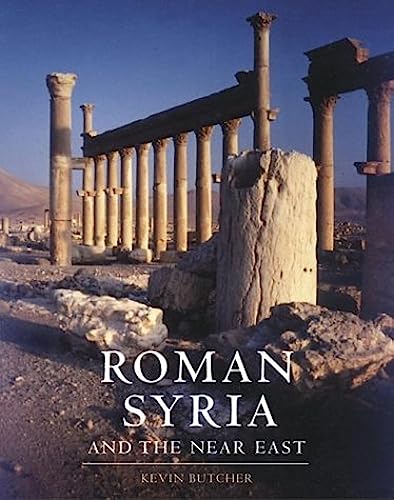

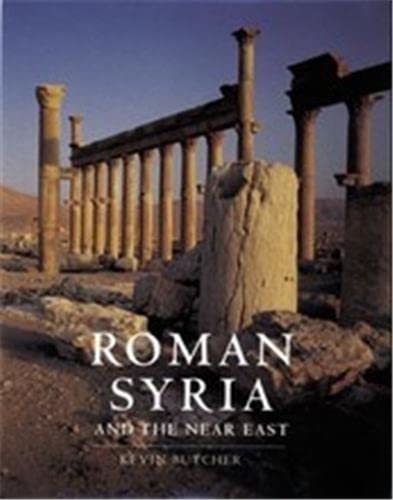
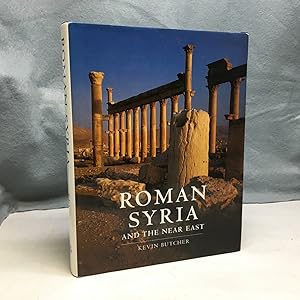


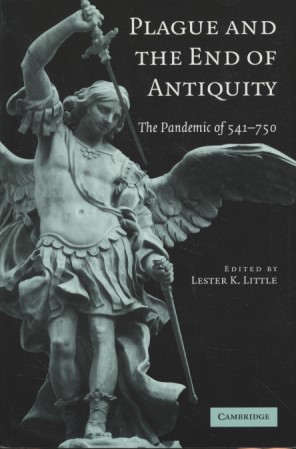
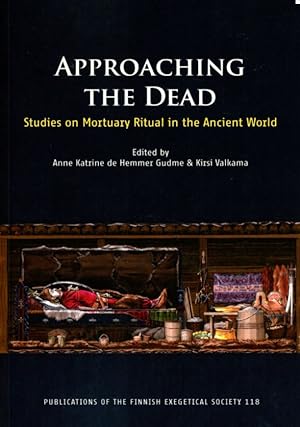




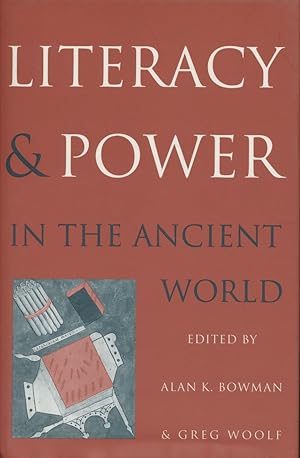

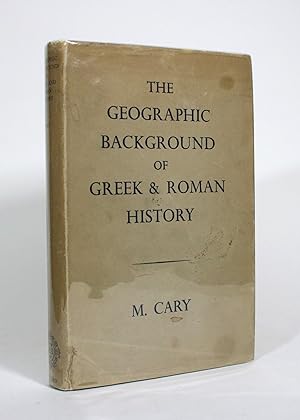



![Bild des Verkäufers für Das Tempelgrab Nr. 36 in Palmyra. Studien zur Palmyrenischen Grabarchitektur und ihrer Ausstatung. (Damaszener Forschungen). I: Text; II: Tafeln, Beilagen und Pläne. [TWO VOLUMES]. zum Verkauf von Librarium of The Hague](https://pictures.abebooks.com/inventory/md/md30694284821.jpg)


